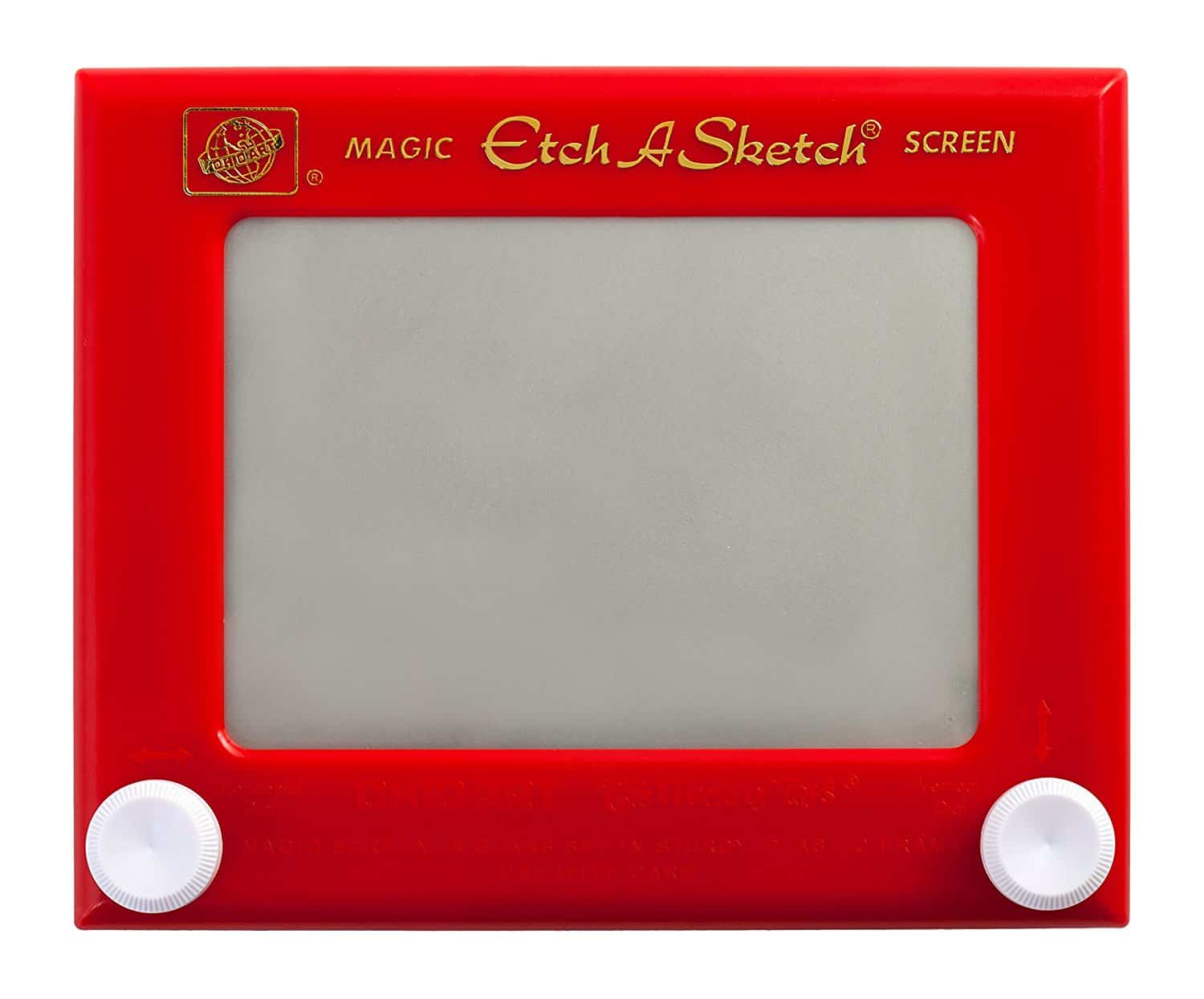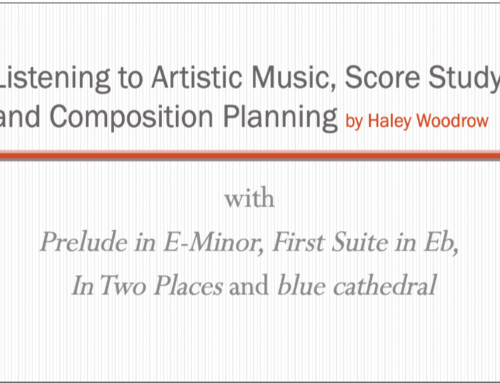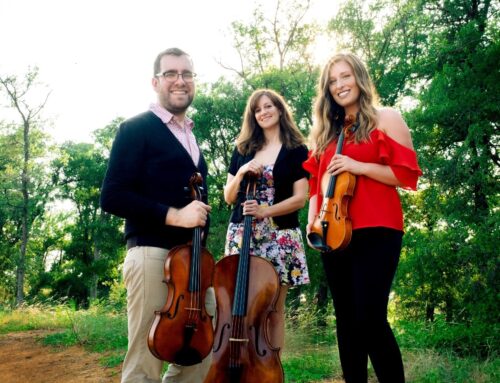Etch-A-Sketch:
The benefit of collaboration within the compositional process
Education • August 1, 2017
Etch-A-Sketch: The benefit of collaboration within the compositional process is the 3rd place winner in the Graduate Division of the Texas Music Educators Association’s 2016 Essay Contest for College Students! The article features conversations with the late Dr. David Maslanka, Dr. Frank Ticheli and Mr. William Owens.
The Article
To effectively create a work of art in any medium, an artist must both understand what it is they are trying to create, and possess the technical skills required to bring the artwork into existence. The first profound interaction I experienced with an artist happened under unlikely circumstances. When I was around nine or ten years old, my dad took my Etch-A-Sketch—a favorite childhood toy of mine—and intricately drew the front of our two-story brick house in detail. You remember the Etch-A-Sketch of course: a simple device with a flat gray screen and a red plastic frame, in which drawing is accomplished by using two knobs that each controls a stylus, one for a vertical line and the other for a horizontal line. Simple as the toy is, to draw anything successfully, an Etch-A-Sketch operator must have a clear picture in their mind of what they would like to portray, and then possess the ability to do so. In a discussion of drawing—albeit the pencil and paper variety—in her book Drawing on the Right Side of the Brain, Dr.Betty Edwards states “Drawing is a curious process, so intertwined with seeing that the two can hardly be separated. Ability to draw depends on ability to see…”
And if this is the truth—if the ability to draw depends on the ability to see, then it’s not too far- fetched to hypothesize that the ability to make music depends on the ability to hear. Growing up in Texas and being introduced to music performance largely through my school band program, I learned to play an instrument primarily by reading music rather than by rote. I wholeheartedly believe that music notation is a wonderful communication medium, one that allows for a highly organized approach to making music that is particularly suited for large ensemble rehearsals. Yet there is danger in notation as well: the ability to replicate notes, dynamics, articulation and rhythms without necessarily possessing the ability to audiate those elements breeds an environment in which students may become great technicians, but not fluent in the language of music. Similarly, it is not uncommon to find a high school student who has taken four years of language class but unfortunately cannot participate in every-day conversation with native speakers. Benny Lewis, author of Fluent in Three Months and fluent himself in seven languages, suggests that to learn a language effectively, students should ignore grammatical rules (at least in part) and focus instead on memorizing and speaking common phrases each day. Music education can find itself in a similar situation if the average music student, after seven to eight years of time spent in school ensembles, typically knows how to finger notes, how to produce sound on their instrument, and how to read notation— but may have little understanding of how and why a piece of music works, or how their individual part functions in the communication process from composer to performer to audience.
One way to help students move beyond notes and rhythms is interaction between a commissioned composer and a performing ensemble. In an interview conducted through email correspondence, established composer and conductor Dr. Frank Ticheli, composition professor at the University of Southern California, says that “When two creative minds become involved in a creative project—whether those two minds are largely in sync or in opposition or somewhere in between—a certain tension occurs, a kind of creative friction. And this is usually a good thing, because friction is a necessary component in creativity. In other words, any creative artist thrives on tension. They need it in order to create….When a composer and performer(s) become involved in the creation of a new work, the friction can be just as powerful.”
Because composers do not always conduct their new works, a certain responsibility falls on them to write for an ensemble in an interactive way, rather than writing without any back and forth communication with the commissioning group. In his book Powers of Two, which explores the relationships in collaboration of many famous duos, Joshua Wolf Shenk asks “where did the myth of the lone genius come from, anyway?…So much of what we believe to be true about how we develop, how we operate, and indeed who we are evolved in the shadow of the erroneous idea about human beings as self-contained, cut off, solitary.” Even with established composers, communication with a performing ensemble is advantageous. At the basic level, the simplest conversation can be an opportunity to create the creative tension Ticheli deems necessary. Seeing a musical work come into being through its various revisions can greatly benefit students, enhancing their understanding of how musical lines combine to form a whole. The composer can also provide insight into what the music is attempting to communicate, offering the performers a deeper connection to the music. The performers, in turn, give the composer insights into the work, which may result in significant improvements to the composition. Common could be the situation in which a conductor or performer, through the written music and interaction with the composer, understands what the composer is trying to accomplish and makes constructive suggestions specific to an instrument or musical gesture. This is clearly of great value to the composer but also can be an extremely rewarding experience for the student performers, who are in more than one way now collaborating in the creation of a new work. Accomplished composer and former professor Dr. David Maslanka articulates a relevant sentiment regarding the creation of a new work: “My connection to performers and conductors will be intense before I begin a piece… For me the happiest way a piece begins is a commission from people I know and have worked with in the performance of existing pieces. The deepest relationship of that sort was with Stephen Steele at Illinois State University (now retired.) He performed my music pretty much every year for a space of 30 years, and spearheaded many commissions, including Symphonies 5, 7, 8 and 9. Our long collaboration allowed for a huge evolution of energy in each of us.”
Dr. David Maslanka
For public school music programs, time restrictions are undoubtedly a limiting factor, considering the ambitious schedule of events that takes place throughout the school year and the administrative time directors need to accomplish their never ending to-do lists. But if students come to better understand how to hear and interpret a piece of music through a collaborative experience, these invaluable skills will carry over into every subsequent piece they play. This will make future learning deeper and more efficient, more than making up for any time lost. Another factor of course is budget; not every program can afford to commission a new work from a well-known composer. A similar experience, however, can be found in part by having students play music written by a local composer—perhaps a college composition student or professor at a local university—or a director in the district who might have an interest in writing. Or, if a classroom composition exercise is given to the students, a reading of a few outstanding student works can be productive. Veteran composer and music educator William Owens, for example, feels students playing student compositions “puts a new spin on the music for everyone involved, it’s a phenomenal thing. Also, students that begin composing in high school tend to continue composing as they age into college students and adults.” The experience of communication with composers, understanding the intent of the creators’ minds, and using their technical abilities to execute the music are all invaluable to students at any level.
All those years ago, my dad knew exactly what he wanted to depict with the Etch-A-Sketch, and possessed the ability to successfully do so. And because I also knew the front of our house well, I was able to perceive his artistic mind and appreciate his creation on a deeper level than I had ever previously experienced. Through combining the Texas tradition of producing highly proficient student musicians with new efforts towards musical fluency, such as composer-ensemble interactions, our students can also experience the joy that comes from understanding the mind of an artist and partnering in communication with them through musical performance. Understanding the intricacies of music well enough to know what is being depicted while simultaneously striving to achieve the technical abilities required to accomplish such a feat is no small undertaking, therefore instances in which both these elements are demonstrated successfully in performance should be regarded highly and celebrated. Collaboration during the compositional process aids greatly in our musical efforts and should once again become the norm, rather than the exception. As Ticheli writes, “reaching out and collaborating with others is often exciting and productive, and it reminds us all that music is a living, breathing entity.”





